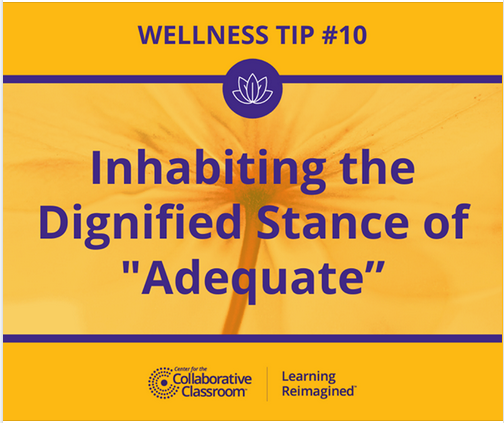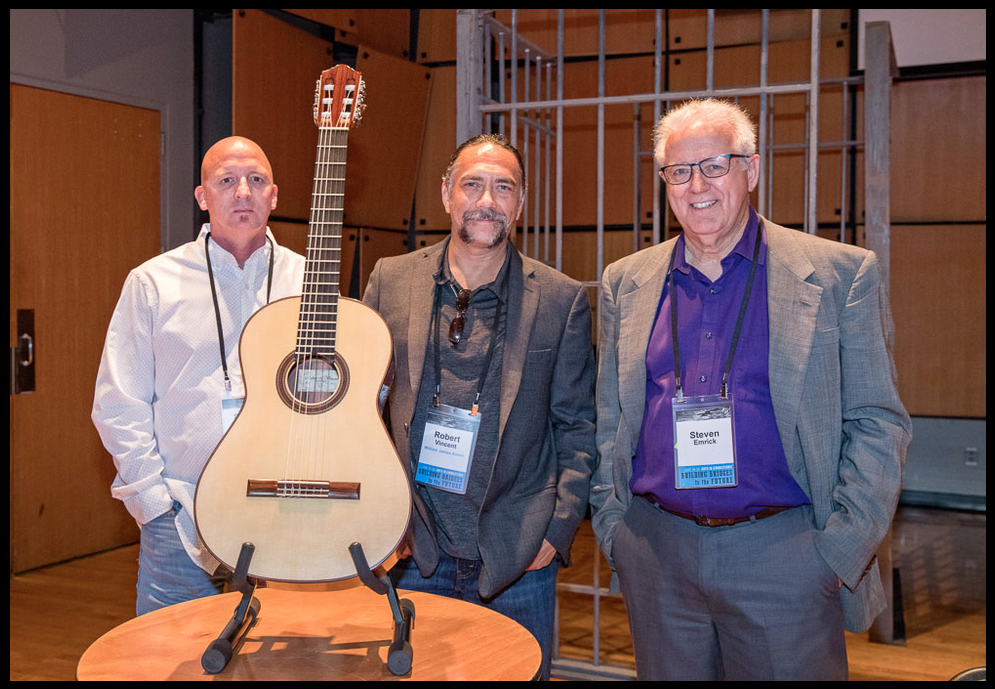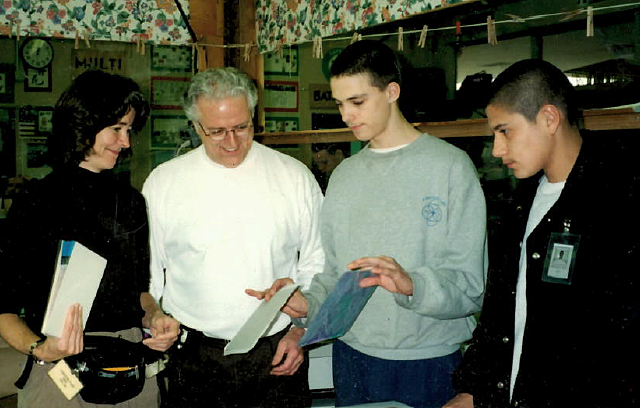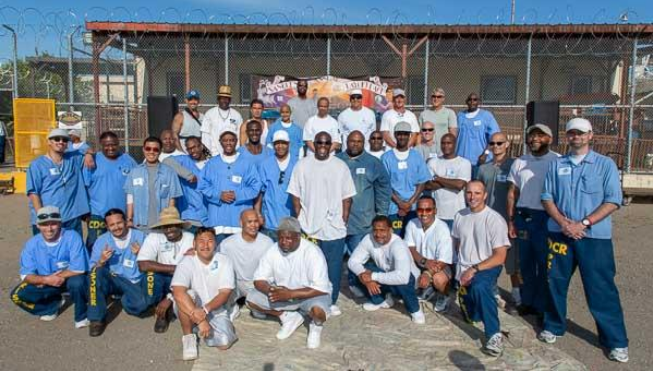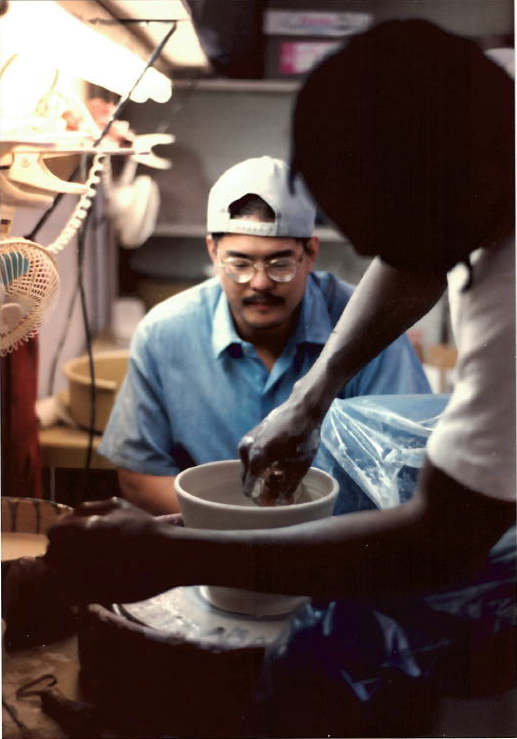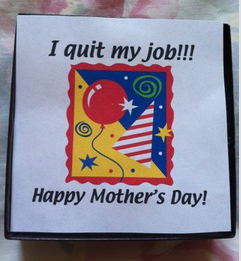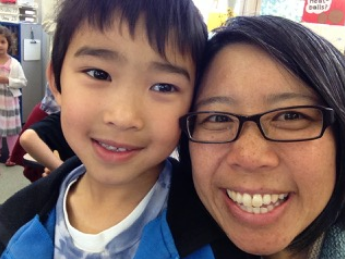In the second part of my interview with yoga teacher Charu Rachlis, she describes the mix of Catholicism, Macumba, and Candomblé she was exposed to as a child growing up in Brazil, and how she selected elements from each to form her own spiritual beliefs and practices.
Openness to the Unseen
S: Did anyone in your childhood model a spiritual approach to life?
C: Yes, my maternal grandmother. I was her first granddaughter. My mom was busy; my younger sister and I are only 11 months apart. So my grandmother took care of me. She was Catholic, but she wasn’t strict about it; she had her own form of devotion. She connected with the divine, addressed the angels. She never tried to indoctrinate me, never said, Let’s go pray—we’d just sit together and I would feel the divine in the way that she was and in the love she had for me. And she’d speak about the angels to me. She lived to be 90 years old. Till the last moment we had a powerful, loving relationship.
Charu with her parents and younger sister.
Charu’s maternal grandparents.
S: Given that Catholicism is the dominant religion in Brazil, I’m imagining that everyone there stands in some kind of relation to it.
C: That’s true. My father was an atheist and my mother has always believed in God. She goes to church on holidays and lights candles and prays. I attended Catholic school. I was baptized and did first communion and studied the catecismo. But I didn’t really understand much about the religion. I dropped Christianity after confirmation. When I got to be a teenager I really felt disconnected from Christianity. It didn’t feel right to have this god up there in the air judging everybody. It was very limiting and it felt connected to the dictatorship. It didn’t reflect what I was understanding in my own heart. I wasn’t clear about what God is until much later on, when I took up meditation.
Even though Catholicism is strong in Brazil, many people including our family also have a strong relationship to the Afro-Brazilian Candomblé/Macumba religion. Candomblé is like an umbrella religion with many different branches, including Macumba. Candomblé is closely connected to African culture while Macumba has more Brazilian flavor to it. They’re both very alive in Brazil, more so than Catholicism.
We would go to Macumba healing circles to participate in cleansing, empowering ceremonies. In this religion, each individual has a special relationship to one of the many orixas, or deities. For example, my orixa is Oxum, the female goddess of sweet waters, which includes lakes, rivers, and waterfalls. She represents love, beauty, intimacy, fresh water. At the healing circles we would receive guidance in making offerings to our orixas. I loved the beautiful drumming and dance that are part of that tradition. Overall, I felt Macumba and Candomblé were much more alive and genuine than Catholicism. A lot of my friends felt the same way.
S: Was your grandmother into Afro-Brazilian spirituality too?
C: Not as much, although she did go to the healing centers. But her son was totally into it––he would receive different deities––and she saw the truth of his experience. She was very respectful of all the ways that people find their own truths.
S: Did Macumba and Candomblé influence your later spiritual path?
C: Absolutely. In Afro-Brazilian religion there are deities of the ocean, the rivers, the rocks, the forests. I developed a capacity to be in touch with these energies connected to nature, and I absorbed the religion’s openness to the unseen. I also really related to the rituals, which are conducted in a circle. When I open my circle in yoga class by guiding my students through a meditation, I feel like I’m channeling the energy of the healing circles I attended as a young person.
Next: The Heart Is the Major Target—Part 3: In Exile in My Own Country
-
August 2021
- Aug 31, 2021 The Heart Is the Major Target—Part 9: The Teacher Role Isn't My Essence Aug 31, 2021
-
June 2021
- Jun 13, 2021 The Heart Is the Major Target—Part 8: Machines Spilling Out Teachers Jun 13, 2021
-
April 2021
- Apr 14, 2021 The Heart Is the Major Target—Part 7: A Waterfall of Inspiration Apr 14, 2021
-
February 2021
- Feb 14, 2021 The Heart Is the Major Target—Part 6: Grab the Right Computer File Feb 14, 2021
-
December 2020
- Dec 26, 2020 The Heart Is the Major Target—Part 5: Yoga Is My Second Child Dec 26, 2020
-
November 2020
- Nov 5, 2020 The Heart Is the Major Target—Part 4: Wow, This Is Me Nov 5, 2020
-
October 2020
- Oct 4, 2020 The Heart Is the Major Target—Part 3: In Exile in My Own Country Oct 4, 2020
-
August 2020
- Aug 23, 2020 The Heart Is the Major Target—Part 2: Openness to the Unseen Aug 23, 2020
- Aug 2, 2020 The Heart Is the Major Target—Part 1: Let's Move Around; We'll Feel Better Aug 2, 2020
-
July 2020
- Jul 25, 2020 Educator Wellness Series Conclusion: Moving Forward with Wellness Jul 25, 2020
- Jul 6, 2020 Educator Wellness Practice #10: Inhabiting the Dignified Stance of "Adequate" Jul 6, 2020
-
June 2020
- Jun 17, 2020 Educator Wellness Practice #9: Jun 17, 2020
- Jun 3, 2020 Educator Wellness Practice #8: Reducing Stress Through Body Scanning Jun 3, 2020
-
May 2020
- May 21, 2020 Facebook Live Event: A Conversation About the Impact of Saying Goodbye to Students May 21, 2020
- May 13, 2020 Educator Wellness Practice #7: Setting Intention and Letting Go of Results May 13, 2020
- May 6, 2020 Educator Wellness Practice #6: Practicing Goodwill as Self-Care May 6, 2020
-
April 2020
- Apr 29, 2020 Educator Wellness Practice #5: Dealing with Constant Change Apr 29, 2020
- Apr 22, 2020 Educator Wellness Practice #4: Listening to Silence Apr 22, 2020
- Apr 21, 2020 Facebook Live Event: A Conversation About the Importance of Self-Care Apr 21, 2020
- Apr 15, 2020 Educator Wellness Practice #3: Apr 15, 2020
- Apr 8, 2020 Educator Wellness Practice #2: Engaging Wisely with News and Media Apr 8, 2020
- Apr 1, 2020 Educator Wellness Practice #1: Breathe ... Keep Breathing Apr 1, 2020
-
March 2020
- Mar 25, 2020 Educator Wellness Series for Collaborative Classroom Mar 25, 2020
-
May 2019
- May 19, 2019 Managing to Build Bridges - Part 8: Do We Want to Be Right in a Dictionary Sense? May 19, 2019
-
April 2019
- Apr 27, 2019 Managing to Build Bridges - Part 7: You Just Need to Find a Good Husband Apr 27, 2019
- Apr 6, 2019 Managing to Build Bridges - Part 6: Human Remains and Cultural Artifacts Apr 6, 2019
-
March 2019
- Mar 17, 2019 Managing to Build Bridges - Part 5: Poetry Has No Rules Mar 17, 2019
- Mar 3, 2019 Managing to Build Bridges - Part 4: Dessert Goes to a Different Stomach Mar 3, 2019
-
January 2019
- Jan 13, 2019 Managing to Build Bridges - Part 3: I Felt Pretty Stupid Jan 13, 2019
-
December 2018
- Dec 9, 2018 Managing to Build Bridges - Part 2: Such a Bad Kid Dec 9, 2018
-
November 2018
- Nov 23, 2018 Managing to Build Bridges - Part 1: The Pressure to Be a Certain Type of Girl Nov 23, 2018
-
October 2018
- Oct 23, 2018 Leadership Without Ego - Part 6: Mayberry with an Edge Oct 23, 2018
- Oct 1, 2018 Leadership Without Ego - Part 5: Everyone Everywhere Deserves to Make Art Oct 1, 2018
-
September 2018
- Sep 10, 2018 Leadership Without Ego - Part 4: I'm About Ready to Swear Sep 10, 2018
-
August 2018
- Aug 19, 2018 Leadership Without Ego - Part 3: The Dalai Lama Breaks All the Rules Aug 19, 2018
-
July 2018
- Jul 29, 2018 Leadership Without Ego - Part 2: The Kids Melted Under That Praise Jul 29, 2018
- Jul 10, 2018 Leadership Without Ego - Part 1: The Workshop Was Neutral Territory Jul 10, 2018
-
May 2018
- May 26, 2018 The Alchemy of Service - Part 5: Watch Out, Someone's Behind You May 26, 2018
- May 6, 2018 The Alchemy of Service - Part 4: Fireworks and Tears May 6, 2018
- May 5, 2018 The Alchemy of Service - Part 3: Joann Wong! You Are Chinese! May 5, 2018
-
April 2018
- Apr 6, 2018 The Alchemy of Service - Part 2: Mom, It's Only a Nickel Apr 6, 2018
-
March 2018
- Mar 19, 2018 The Alchemy of Service - Part 1: Mouse Soup Mar 19, 2018
-
February 2018
- Feb 18, 2018 Back to the Garden - Part 4: Mountain Lion Footprints on the Deck Feb 18, 2018
- Feb 3, 2018 Back to the Garden - Part 3: "You're a Good Egg—Happy Easter" Feb 3, 2018
-
January 2018
- Jan 15, 2018 Back to the Garden - Part 2: "A Pretty Big Failure" Jan 15, 2018
- Jan 1, 2018 Back to the Garden - Part 1: "Aesthetic Shock" Jan 1, 2018
-
August 2017
- Aug 15, 2017 Goodbye Self-esteem, Hello Self-compassion – Part 3: Real Love Aug 15, 2017
-
July 2017
- Jul 31, 2017 Goodbye Self-esteem, Hello Self-compassion – Part 2: Mirror, Mirror Jul 31, 2017
- Jul 17, 2017 Goodbye Self-esteem, Hello Self-compassion – Part 1: Bashing Vasco Jul 17, 2017
-
May 2017
- May 28, 2017 This Thing I Found: Teens Teach Us How to See Freshly May 28, 2017
-
March 2017
- Mar 20, 2017 Dream On - Part 6: Dream Analysis Example Mar 20, 2017
- Mar 7, 2017 Dream On - Part 5: A Dream Analysis Technique (cont.) Mar 7, 2017
-
February 2017
- Feb 20, 2017 Dream On - Part 4: A Dream Analysis Technique Feb 20, 2017
-
January 2017
- Jan 22, 2017 Dream On - Part 3: Recording Dreams Jan 22, 2017
- Jan 15, 2017 Dream On - Part 2: Dream Recall Jan 15, 2017
-
December 2016
- Dec 30, 2016 Dream On – Part 1 Dec 30, 2016
- Dec 12, 2016 Enjoying the Ride of Serendipity Dec 12, 2016
- Dec 6, 2016 Agnes Martin: A Singular Career Dec 6, 2016



